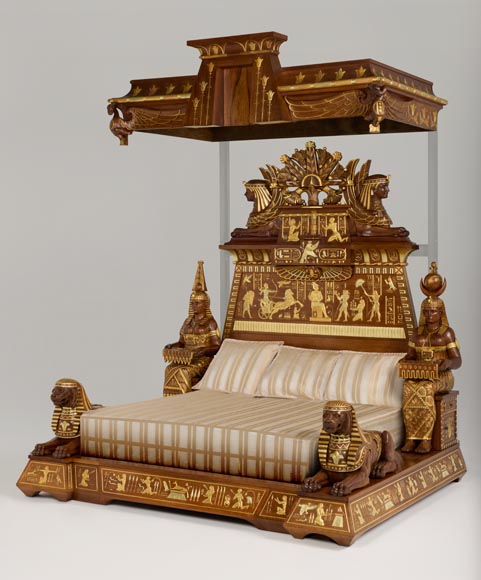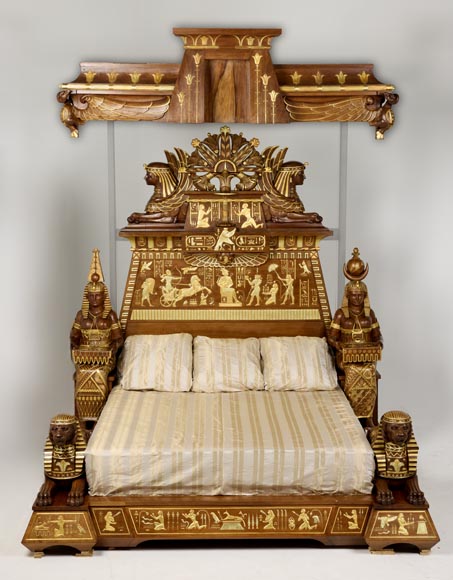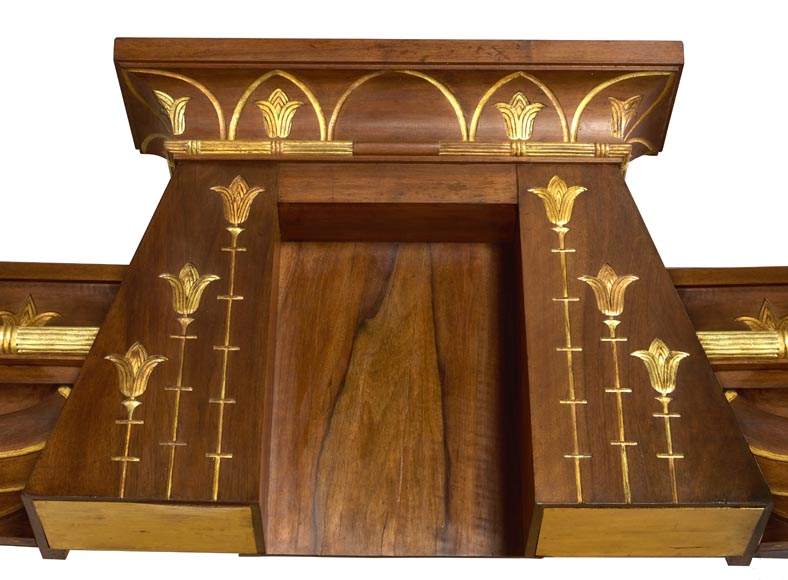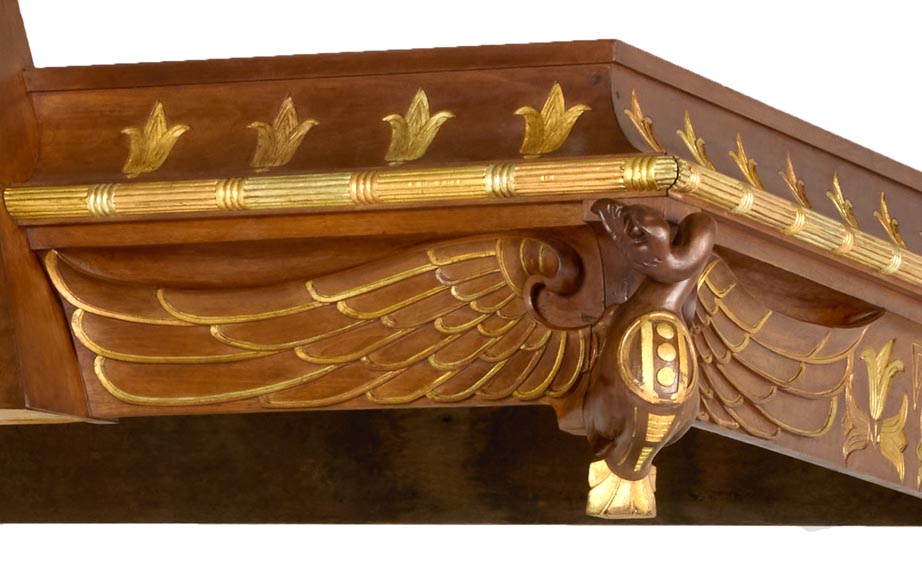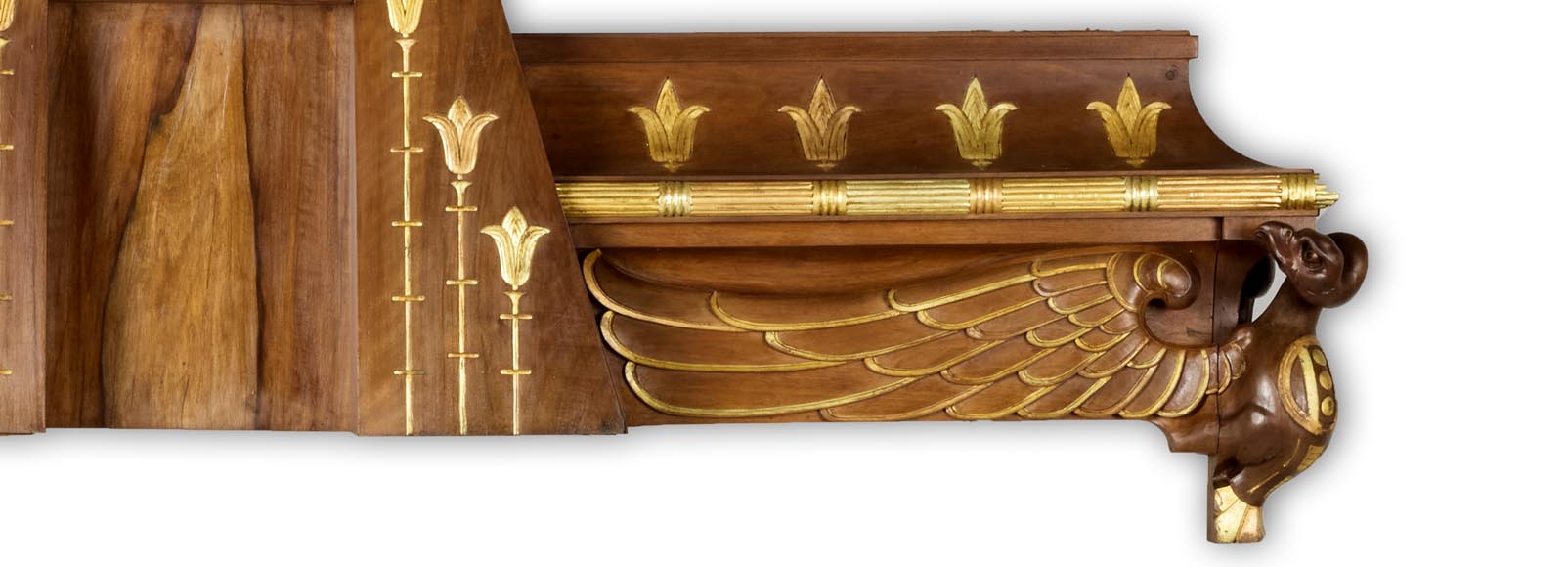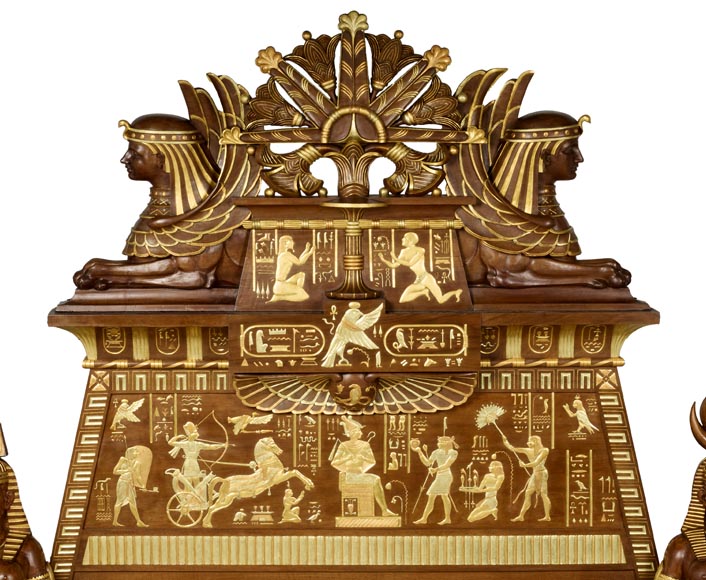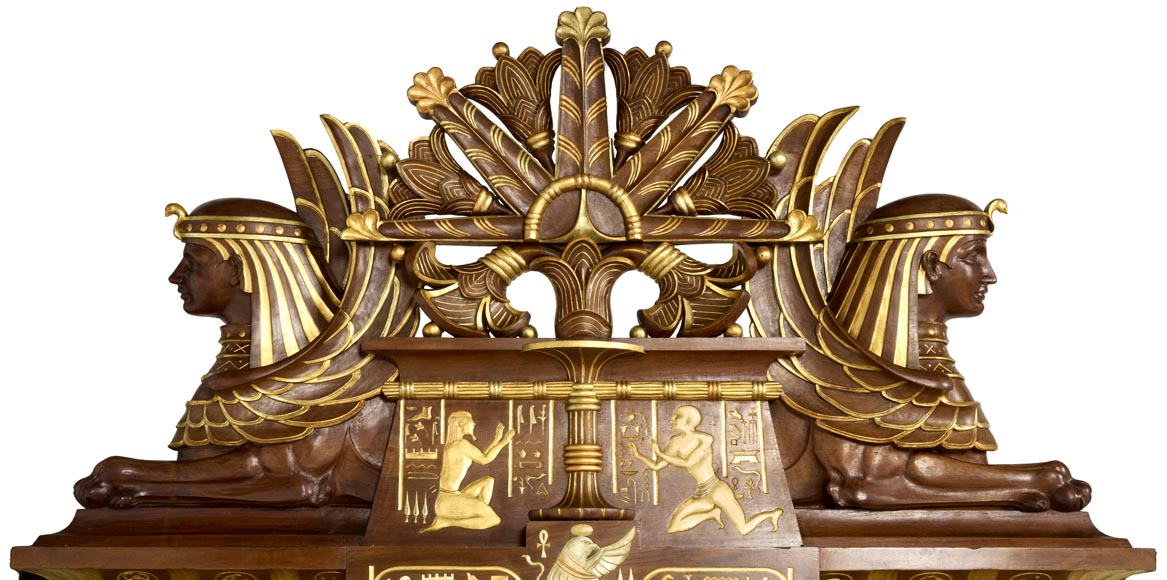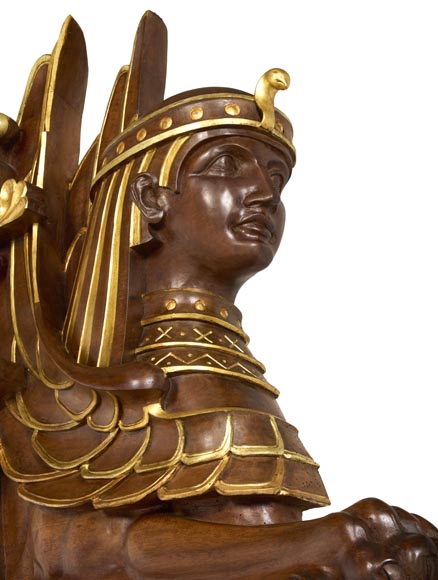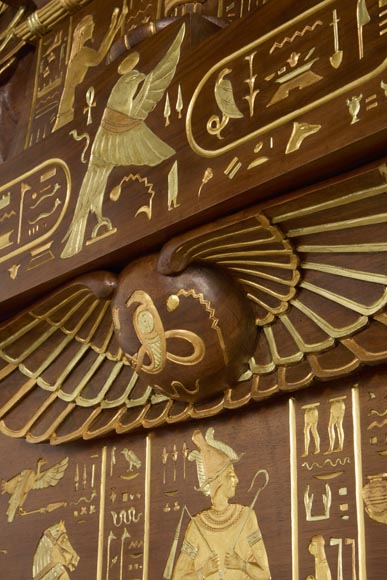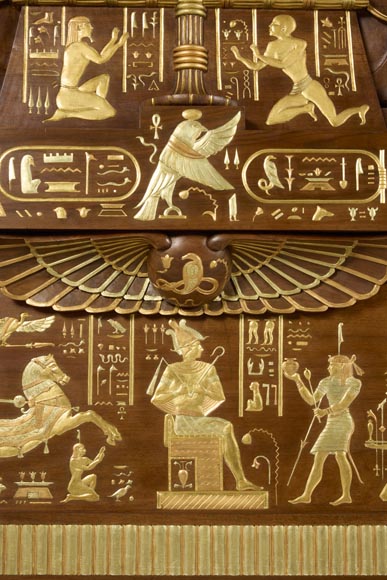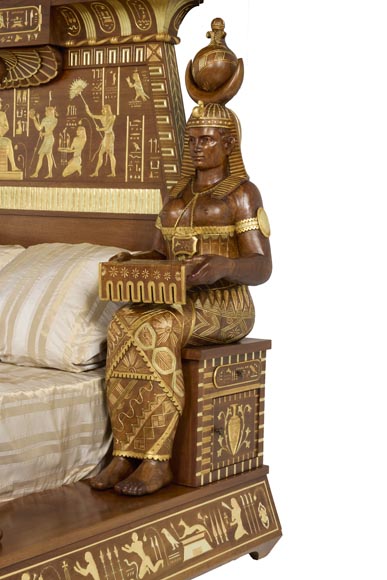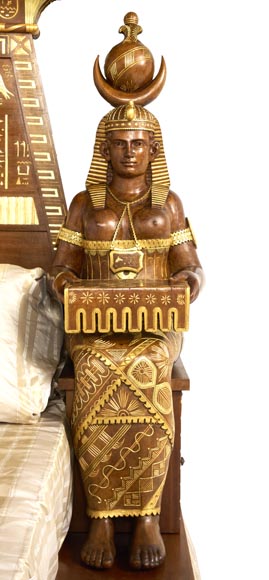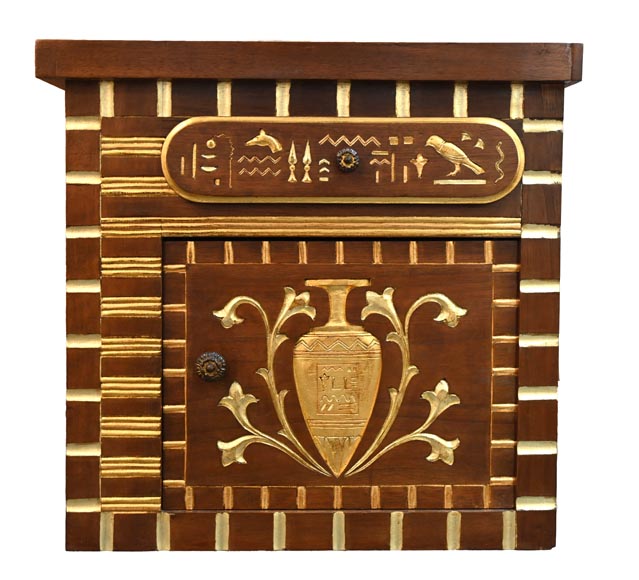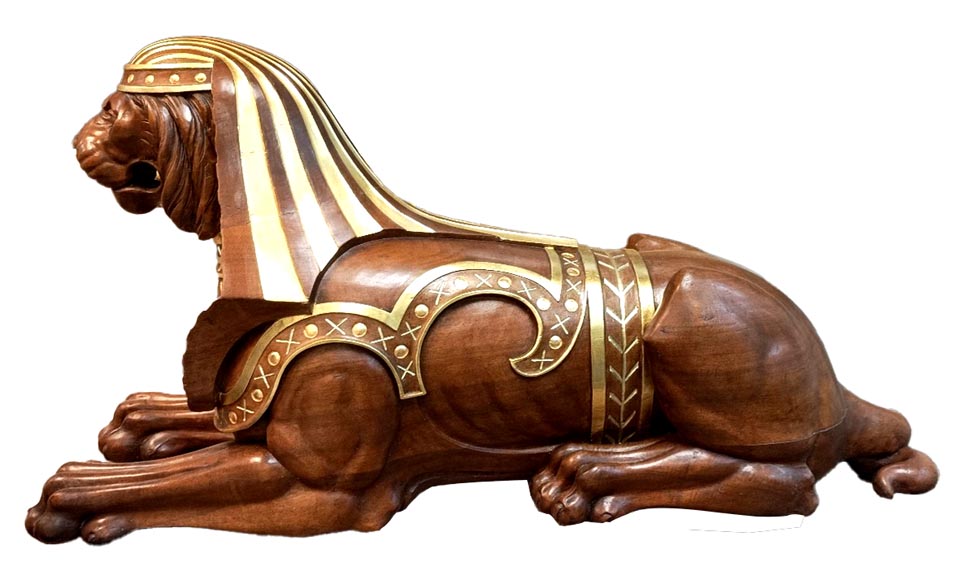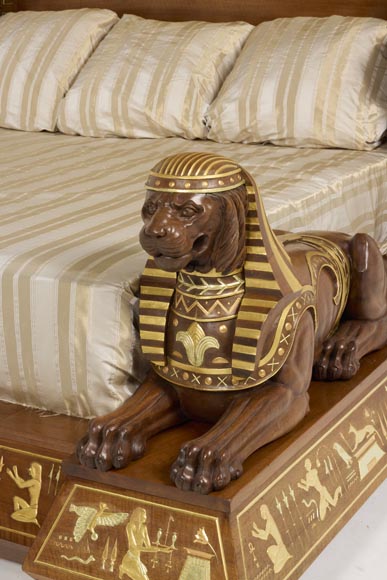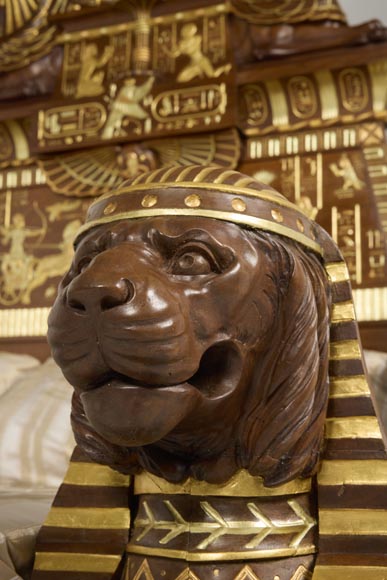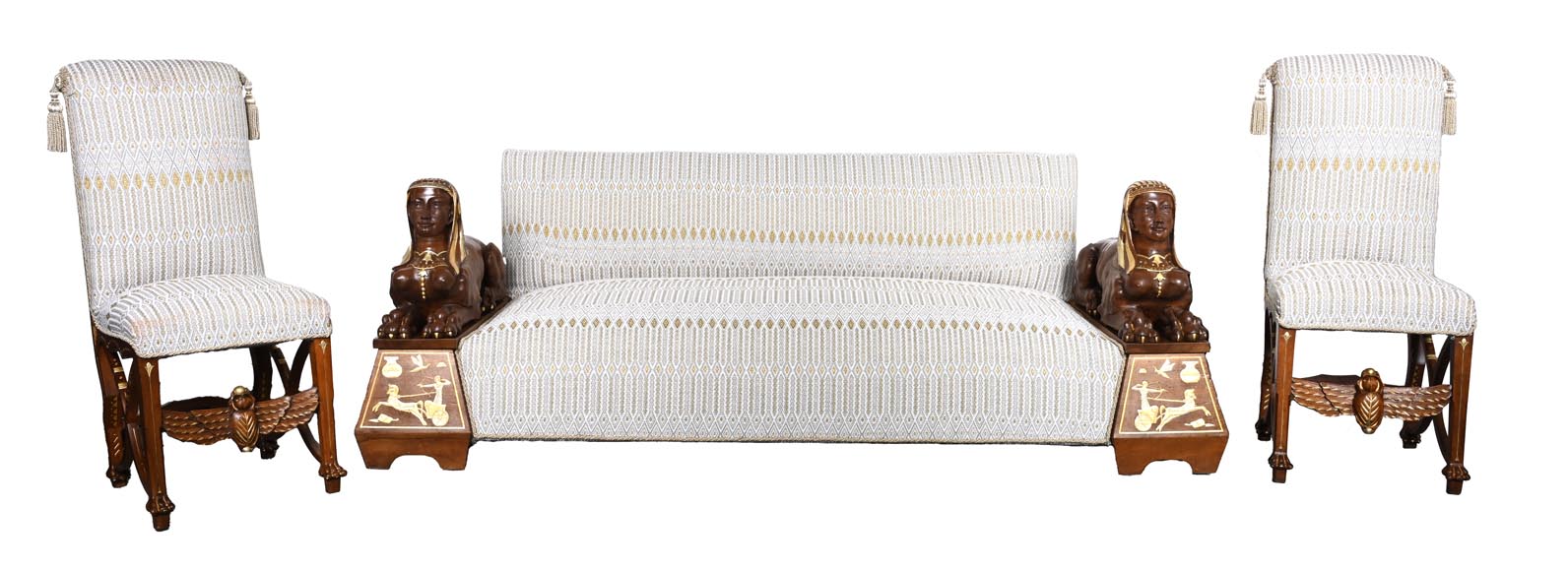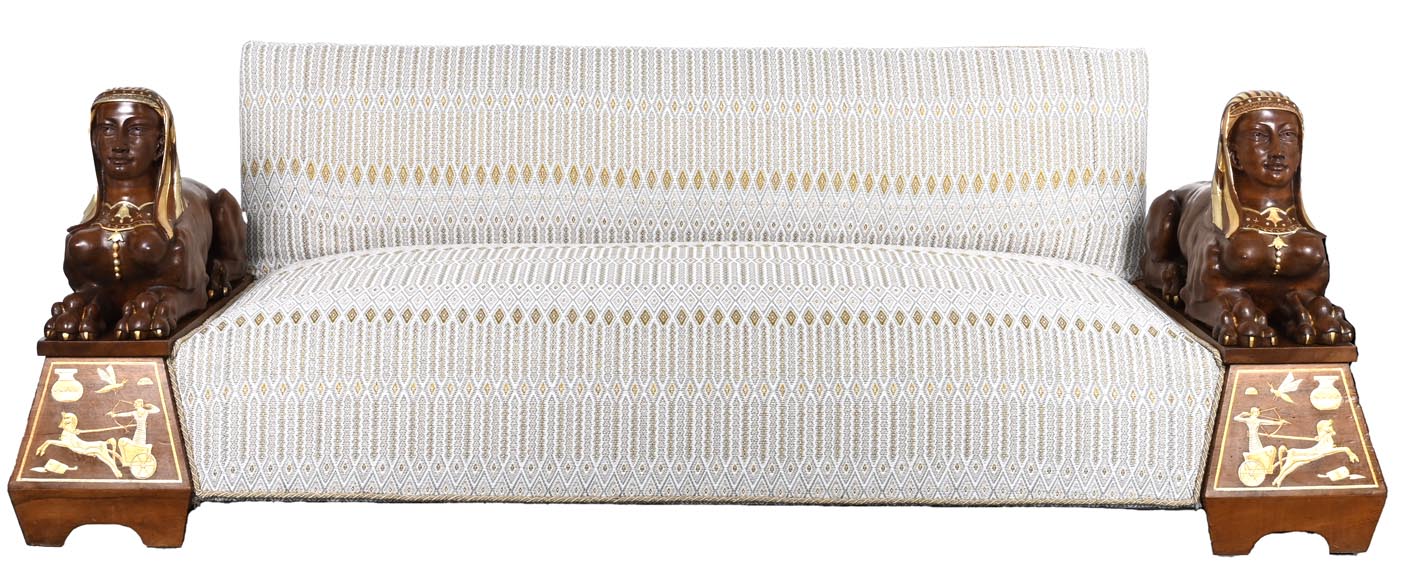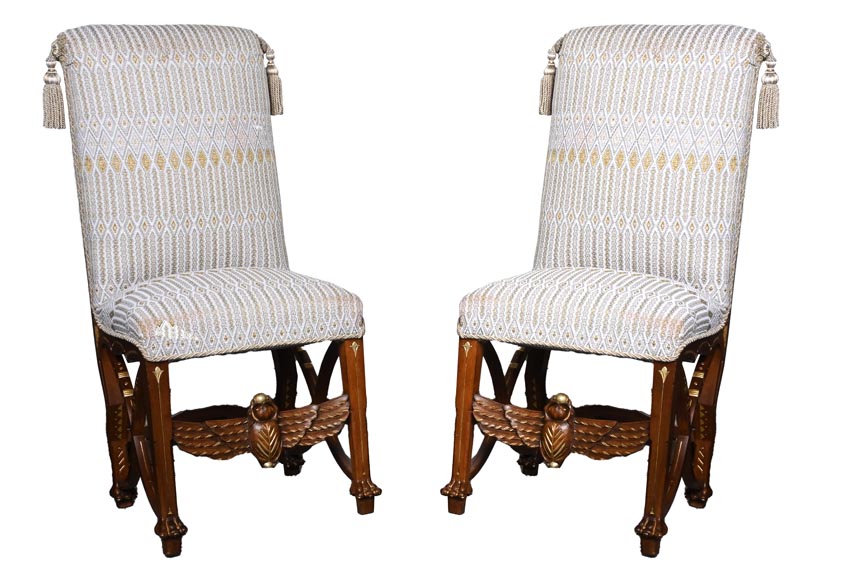Style Egyptian / Ref.11700
Louis MALARD, Unique “Ramses-Style” Bedroom in Walnut With Gold Leaf Embellishment, 1889 World’s Fair
Dimensions
Width 102'' ⅜ 260cm
Height 135'' ⅞ 345cm
Depth: 91'' ⅜ 232cm
Origin:
French
H. 271 cm / 106” 11/16; W. 260 cm / 102” 3/8; D. 232 cm / 91” 5/16 (bed without canopy)
H. 74 cm / 29” 1/8; W. 231 cm / 90” 15/16; D. 148 cm / 58” 1/4 (canopy)
H. 73 cm / 28” 3/4; W. 212 cm / 83” 7/16; D. 74 cm / 29” 1/8 (bench)
H. 101 cm / 39” 3/4; W. 45 cm / 17” 3/4; D. 42 cm / 16” 9/16 (chairs)
This extraordinary neo-Egyptian set bedroom crafted in carved solid walnut and enhanced with gold leaves (yellow, green, and red), was created by Louis Malard for display at the 1889 Paris Exhibition, where it earned him a silver medal.
The cabinetmaker Louis Malard operated a workshop and furniture store located at 9 bis, rue Maubeuge in Paris. The establishment produced and sold furniture in various styles, particularly historical ones. It exhibited different furniture ensembles at the 1889 and 1900 World’s Fairs. Various reports and advertisements published in Le Figaro allow us to date his activity to between 1886 and 1903.
The centerpiece of this bedroom set is the bed. While it does not resemble Egyptian beds as depicted in archaeological findings from the 19th century, it incorporates the architectural and artistic codes of ancient Egyptian art to create a monumental, unique work that aligns with the requirements of modern comfort.
The canopy is adorned with an Egyptian temple pylon at its center, flanked by vultures with outstretched wings – symbols of the goddess Nekhbet – and lotus flowers.
The headboard features sphinx figures, various hieroglyphs, and scenes inspired by ancient monuments, including Ramses II on his chariot at the Battle of Kadesh (circa 1274 B.C.E.). The artist drew inspiration for this from a low-relief in the Great Temple of Abu Simbel, as documented by Jean-François Champollion in his work Monuments de l’Égypte et de la Nubie (Monuments of Egypt and Nubia).
On either side of the headboard, the bedside tables are decorated with life-size seated figures whose poses mimic the monumental statues of ancient Egypt. Their garments reflect the iconographic codes of feminine fashion visible in the low-reliefs of ancient art.
The foot of the bed is guarded by two lion-sphinxes in a hieratic posture, while the frame combines hieroglyphic signs, worshipper figures, and representations of the god Anubis.
The bed is accompanied by a bench whose decoration mirrors that of the bed frame, along with the motif of sphinxes, and a pair of chairs adorned with scarabs – sacred animals to the Egyptians symbolizing the god Khepri, the rising sun.
The presentation of this bedroom furniture at the 1889 Paris Exhibition was a resounding success: in addition to the silver medal awarded to its creator, it received widespread critical acclaim, including a highly favorable article in Le Figaro. It also achieved commercial success, being purchased by Countess Bathilde Ducos (1851-1927), daughter of a former Minister of the Navy under Emperor Napoleon III. It was sold as part of a theatrical yet less elaborate furniture ensemble forming a bedroom: a wardrobe, a fireplace, and a pair of draperies. This bedroom set was auctioned in 1896, probably to Charles Henri Duquesne, whose family kept it until 2019, when it was acquired by the Galerie Marc Maison.
Today, this bed serves as a reminder of the fascination that 19th century artists and their contemporaries had for ancient Egyptian art, which inspired rich creations and reinterpretations.
Literature:
Le Figaro, July 1, 1889, 35th year, 3rd series, no. 182, p. 2, in the “Courrier de l’Expostion” section.
Charles Oudart (dir.), Gazette de l’hôtel Drouot, Saturday, June 30, Sunday, June 31, and Monday, June 1, 1896.
Jean-François Champollion, Monuments de l’Égypte et de la Nubie…, volume I, Paris, Firmin Didot Frères, 1835, plate XIII.
Informations
Price: on request
Recommended for you :
Dimensions:
Width: 157
Height: 267
Depth: 208
Dimensions:
Width: 198
Height: 187
Depth: 207
Dimensions:
Width: 168
Height: 235
Depth: 55
Dimensions:
Width: 159
Height: 255
Depth: 55
Dimensions:
Width: 122
Height: 76
Depth: 82
Dimensions:
Width: 169
Height: 161
Depth: 210
Dimensions:
Width: 132
Height: 160
Depth: 221
Dimensions:
Width: 166
Height: 144
Depth: 224
Dimensions:
Width: 258
Height: 201
Dimensions:
Width: 72
Height: 76
Depth: 105
Dimensions:
Width: 303
Height: 76
Depth: 115



